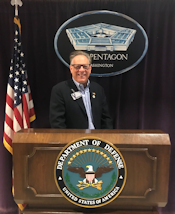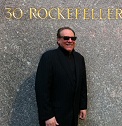US Commerce Dept’s NIST Invests up to $71 Million-9 Nanotechnology Award Winners
Posted on January 29th, 2010 in Uncategorized | No Comments »
On December 15, 2009, The U.S. Commerce Department’s National Institute of Standards and Technology (NIST) announced up to $71 million in funding through its Technology Innovation Program (TIP) for 20 new cost-sharing projects that will support innovative, high-risk research in new technologies that address critical national needs. The new projects will include developing unmanned, hovering aircraft for bridge inspections, a high-speed sorting system for recycling aerospace metals, and nanomaterials for advanced batteries, among other projects. The awards will be matched by other funding sources to achieve nearly $150 million in new research over the next two to five years.
“President Obama is leading an effort to drive economic growth and solve national problems by deploying a 21st Century economy,” U.S. Commerce Deputy Secretary Dennis Hightower said. “These new projects will develop new technology and material that will play a critical role in modernizing infrastructure and developing the manufacturing sector across the country.”
TIP is a merit-based, competitive program that provides cost-shared funding for research projects by single small- or medium-sized businesses or by joint ventures that also may include institutions of higher education, nonprofit research organizations and national laboratories.
The 20 projects announced today were selected from a TIP competition announced on March 26, 2009, seeking projects addressing two broad areas of national interest:
- The practical application of advanced materials including nanomaterials, advanced alloys and composites in manufacturing
- The monitoring or repair of major public infrastructure systems, including water systems, dams and levees, and bridges, roads and highways.
TIP focused on developing new materials based on nanotechnology, advanced composites and so-called “superalloys” or smart materials – and expanding the capacity to incorporate these materials into new products – because many experts consider accelerated development of these advanced materials critical to potential growth in U.S. manufacturing.
As a nonregulatory agency of the U.S. Department of Commerce, NIST promotes U.S. innovation and industrial competitiveness by advancing measurement science, standards and technology in ways that enhance economic security and improve our quality of life. Additional information on the Technology Innovation Program is available at www.nist.gov/tip.
See the list of our 9 Nanotechnology 2009 TIP project awards and links to additional details for each below.
Technology Innovation Program 2009 R&D Awards: Advanced Materials in Manufacturing
Production of Low-Cost, High-Quality Metallic and Semiconducting Single Wall Carbon Nanotube Inks
http://tipex.nist.gov/tippb/prjbriefs/prjbrief.cfm?ProjectNumber=090021
- Brewer Science, Inc. (Rolla, Mo.) (Lead)
- Southwest Nanotechnologies, Inc. (Norman , OK)
Functionalized Nano Graphene for Next-Generation Nano-Enhanced Products
http://tipex.nist.gov/tippb/prjbriefs/prjbrief.cfm?ProjectNumber=090027
- Angstron Materials, LLC (Dayton, Ohio)
Transformational Casting Technology for Fabrication of Ultra-High Performance Lightweight Aluminum and Magnesium Nanocomposites
http://tipex.nist.gov/tippb/prjbriefs/prjbrief.cfm?ProjectNumber=090033
- The Board of Regents of the University of Wisconsin System (Madison, Wis.) (Lead)
- Eck Industries, Inc. (Manitowoc, Wis.)
- Nanostructured & Amorphous Materials, Inc. (Houston, Texas)
- Oshkosh Corporation (Oshkosh, Wis.)
High-Speed, Continuous Manufacturing of Nano-Doped Magnesium Diboride Superconductors for Next-Generation MRI Systems
http://tipex.nist.gov/tippb/prjbriefs/prjbrief.cfm?ProjectNumber=090045
- Hyper Tech Research, Inc. (Columbus, Ohio)
PRINT Nanomanufacturing: Enabling Rationally Designed Nanoparticles for Next-Generation Therapeutics
http://tipex.nist.gov/tippb/prjbriefs/prjbrief.cfm?ProjectNumber=090049
- Liquidia Technologies, Inc. (Durham, N.C.)
Silicon Nanowire Production for Advanced Lithium-Ion Batteries
http://tipex.nist.gov/tippb/prjbriefs/prjbrief.cfm?ProjectNumber=090052
- Amprius, Inc. (Menlo Park, Calif.)
High Volume Production of Nanocomposite Electrode Materials for Lithium-Ion Batteries
http://tipex.nist.gov/tippb/prjbriefs/prjbrief.cfm?ProjectNumber=090163
- A123Systems, Inc. (Ann Arbor, Mich.)
High-Risk, Low-Cost Carbon Nanofiber Manufacturing Process Scale-Up
http://tipex.nist.gov/tippb/prjbriefs/prjbrief.cfm?ProjectNumber=090174
- eSpin Technologies, Inc. (Chattanooga, Tenn.)
Development and Scale-Up of Nanocomposites with Sub-10nm Particles
http://tipex.nist.gov/tippb/prjbriefs/prjbrief.cfm?ProjectNumber=090175
- Pixelligent Technologies, LLC (College Park, Md.) (Lead)
- Brewer Science, Inc. (Rolla, Mo.)
Kudos to our 9 Nanotechnology Community Award Winners.
Regards,
Vincent Caprio “It’s Green, It’s Clean, It’s Never Seen – That’s Nanotechnology”
www.vincentcaprio.org
Executive Director
NanoBusiness Alliance
203-733-1949
vincentcaprio@nynanobusiness.org




